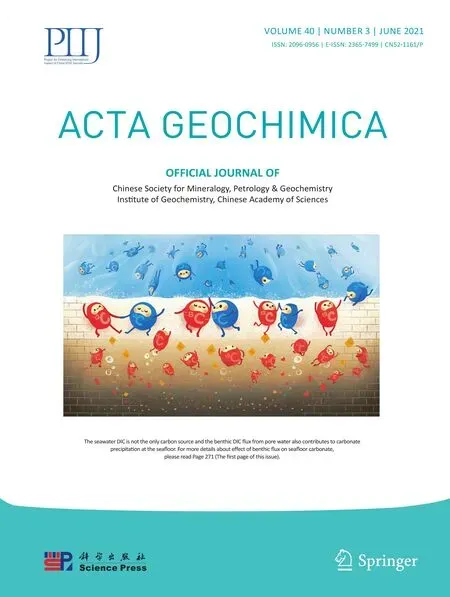Heavy metal:a misused term?
Olivier Pourret·Jean-Claude Bollinger ·Andrew Hursthouse
Abstract The use of the term‘‘heavy metal’’is regularly questioned by the scientif ic community.Here,we followed the evolution(1970–2020)in the number of published papers including this term in their title.Thus,we can evidence a continuous,albeit sometimes stabilizing,increase especially in environmental journals.After several other warning opinions,we propose that it should be replaced in the scientif ic literature by terms like‘‘metal’’,‘‘metalloid’’,‘‘trace metal elements’’or‘‘potentially toxic element’’.
Keywords Heavy metals·Trace metal elements·Metal·Metalloid·Potentially toxic elements
1 History
The chemical elements are now well characterized,and their classif ication in the so-called‘‘Periodic System’’reached its 150-year celebration in 2019(Ghibaudi 2019).They are also allocated to various series,according to similarities in their properties or their electronic structure;among which are the so-called‘‘heavy metals’’.Initially,the term‘‘heavy metal’’was based on categorization by density or molar mass(zinc or copper have relatively low density and molar mass compared to lanthanides and actinides).It is often used as a group name for metals and metalloids(i.e.,arsenic)that are associated with contamination and potential toxicity in the environment.The‘‘heavy metals’’list is not clearly def ined and often mixes metals and metalloids.Ultimately,the pejorative connotation of‘‘heavy’’associated with the toxicity of metal induces a kind of fear in society.From a quick perusal of the recent scientif ic literature,it appears that the(mis)use of the term‘‘heavy metal(s)’’seems still to be rampant:therefore we decided to follow it,as described in the present article.
In elementary science classes,one often asks the children:‘‘Which weighs more—a pound of lead or a pound of feathers?’’The seemingly naive answer to the familiar riddle is the pound of lead.The correct answer,of course,is that they weigh the same amount(Wagman et al.2007).Unfortunately,our own experience has demonstrated that this confusion remains for a part of college students!Apart from this funny side,it seems that it is not so easy to understand what really a‘‘heavy metal’’is,and its original def inition thus pertains,although several‘‘heavy’’metallic elements have somewhat low density.
In 1980,Nieboer and Richardson(1980)had already proposed the replacement of this nondescript term by biologically and chemically signif icant classif ication.Moreover,according to the International Union of Pure and Applied Chemistry(IUPAC)(Duffus 2002),the term‘‘heavy metal’’is considered imprecise at best,and meaningless and misleading at worst.The use of this term is strongly discouraged,especially as there is no standardized def inition of this term.In 2004,Hodson(2004)considered it as geochemical bogeyman;In 2007,Chapman(2007)f irst proposed to keep this term for music not for science.In 2010,Hu¨bner et al.(2010)proposed to move on from semantics to pragmatics,whereas Madrid(2010)recalled the long-standing and sometimes forgotten controversy.Nikinmaa and Schlenk(2010)further insisted on the ill-def ined term.In 2011,Bhat and Khan(2011)def ined them as an ambiguous category of inorganic contaminants,nutrients and toxins.In 2012,Chapman(2012)continued to wrote on‘‘the cacophony not the symphony’’around‘‘heavy metals’’and Batley et al.(2012)further detailed on the usefulness of this term.
However,some authors still proposed their classif ication.In 2010 Appenroth(2010)def ined‘‘heavy metals’’in Plant Sciences,and Ali and Kahn(2018)proposed their own‘‘comprehensive‘‘def inition(Fig.1).In some classical textbooks,their authors continue to use the term in their titles(Alloway 2013;Gupta 2020);however,they now discuss the misuse of the term.Some other authors have clearly changed their mind and revised the content of their textbooks(Lambers and Oliveira 2019).
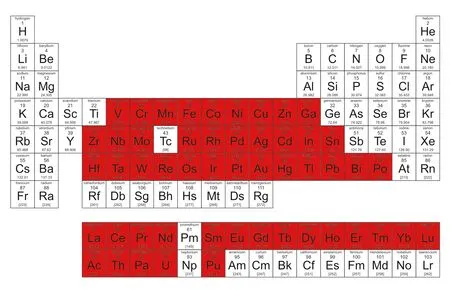
Fig.1 Periodic table highlighting‘‘heavy metals’’,redrawn from Ali and Kahn(2018)
In 2018,Pourret and Bollinger(2018)further questioned on the use of the term‘‘heavy metals’’:to use or not to use?and Pourret(Pourret 2018)proposed to ban this term from the scientif ic literature.Eventually,Pourret and Hursthouse(2019)and Pourret et al.(2020)proposed to replace the term with‘‘potentially toxic elements’’.Indeed,due to their persistence and indestructible nature(only changes in their chemical species can occur),most of them are unfortunately able to def initively pollute groundwater(Belkhiri et al.2017)or soils(Antoniadis et al.2019).
All so-called‘‘heavy metals’’and their compounds may have relatively high toxicity:human exposure to lead by the addition of tetraethyl-lead to gasoline as an antiknock agent,or to lead paint is well documented,however lead–acid battery does not pose direct threat to humans although its disposal may generate environmentally hazardous waste.Nonetheless,metals are not always toxic,and some are in fact essential:depending on the dosage and exposure levels and the receiving organism/population,it may be essential or toxic.Known for its use in the US f ive-cent coin(thus its nickname),nickel is one of the most versatile metals found on Earth:nickel is essential for life(functional in some proteins)and its def iciency is accompanied by histological and biochemical changes and reduced iron resorption and may lead to anemia(Chivers 2014).Physical organic chemists refer the isotope effects of any elements other than H as’’heavy isotope effects‘‘.
2 Current status
The term is increasingly used in the scientif ic literature(Fig.2a),especially in articles pertaining to multidisciplinary environmental issues(see Fig.3 for the year 2020).Despite the repeated calls to stop using the term(including ours),and the apparent regular publication of the articles related to this controversy(Table 1),the use of the term‘‘heavy metal’’appears not to have declined in the scientif ic literature(Fig.2a).Indeed,the use of the term is increasing rather than declining.It should be noted that even if the total number of publications has also simultaneously increased:the proportion of publications using this term have globally increased from 0.074%in 2000 to 0.163%in 2020(Fig.2b).
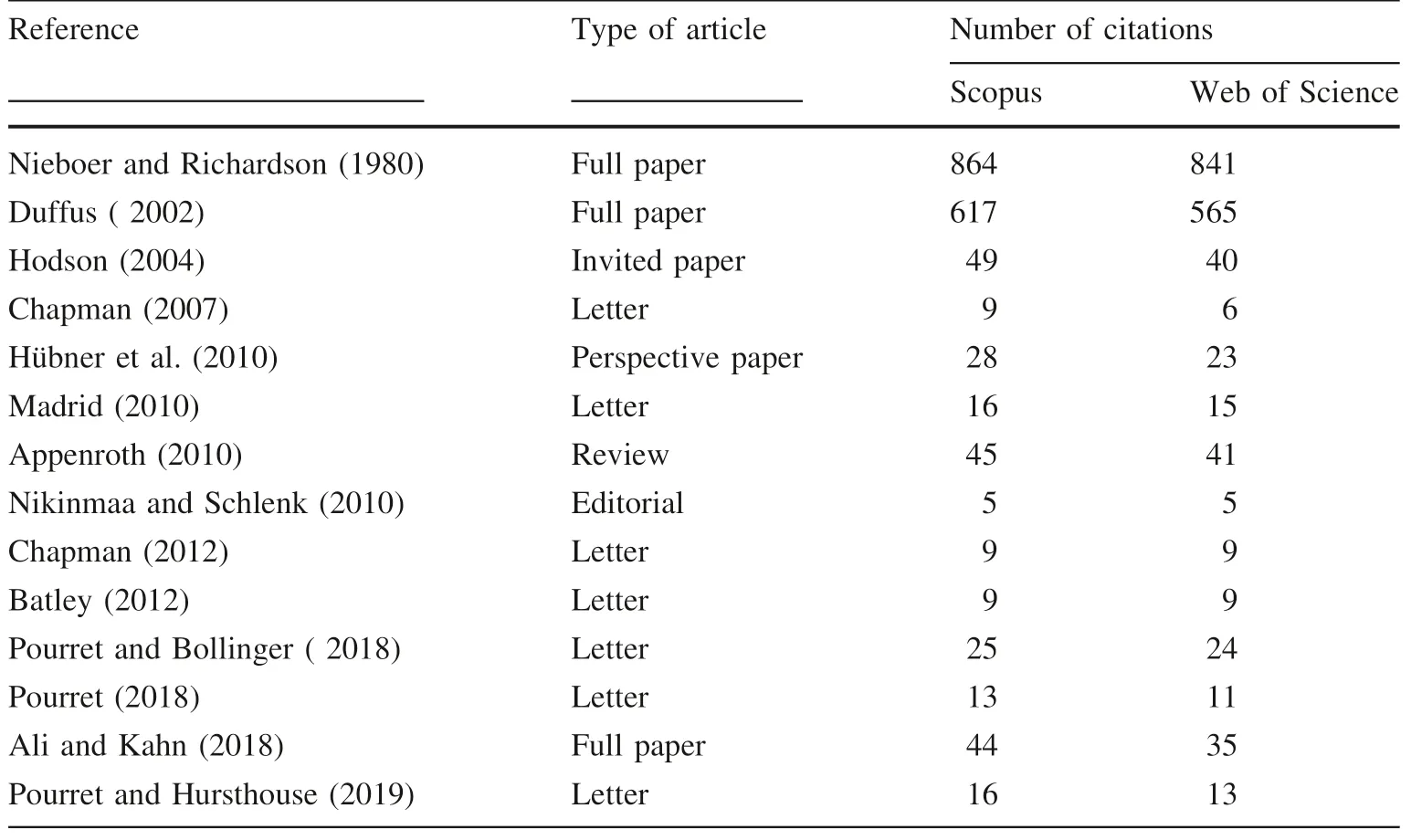
Table 1 Type of article and number of citations of papers related to the controversy use of the term‘heavy metal’’,updated from Pourret and Bollinger(2018);data accessed on 24 February 2021

Fig.2 a Evolution of the number of publications using the term‘‘heavy metal*’’in the title(sourced from Scopus and the Web of Science using the term‘‘heavy metal*’’,data accessed 24 February 2021).Modif ied and updated from(Pourret and Bollinger 2018;Pourret and Hursthouse 2019).b Evolution of publications(number of articles using the term divided by the total number of all articles published that year)using the term‘‘heavy metal’’in the title(data from Scopus using‘‘heavy metal*’search,accessed on 24 February 2021)
The term‘‘heavy metal’’is a common term used for decades in sciences,and even more in environmental sciences(Fig.3),particularly in studies of pollution impacts(Pourret and Hursthouse 2019).If we focus on top journals from the Environmental Science category(selection from Pourret and Bollinger 2018),we can notice a‘‘plateau’’or even a small decrease(Fig.4).

Fig.3 Proportion of publication by research areas in 2020 using the term‘‘heavy metal*’’in the title(sourced from Scopus using the term‘heavy metal*’’,data accessed on 24 February 2021).Modif ied and updated from(Pourret and Hursthouse 2019)
Indeed,if we look into this with more detail,and choose four journals,like Pourret and Bollinger(2018)did,in which the term‘‘heavy metal’’is frequently used(i.e.,Journal of Hazardous Materials,Chemosphere
,Science of the Total Environment
,andEnvironmental Science and
Pollution Research
),we notice an exponential increase during the last 30 years,related to the increasing number of articles;however,the proportion of articles using the term‘‘heavy metal’’remains stable at around 3%forEnvironmental Science&Technology
(selected as a reference),whereas the use of the term has stabilized inScience of the Total Environment
andChemosphere
(between 10%and 15%),and theJournal of Hazardous Materials
orEnvironmental Science and Pollution Research
still see high levels of use of this term(up to 20%)(Fig.4).If we further look at the number of articles published in 2019 with the term‘‘heavy metal’’in their title(Table 2),Environmental Science and Pollution Research
published the higher number of articles with‘‘heavy metal’’in their title(102)and up to 7%of article published inEnvironmental Monitoring and Assessment
used this term.InActa Geochimica
,5%of published article(3/67)used the term‘‘heavy metal’’in their title.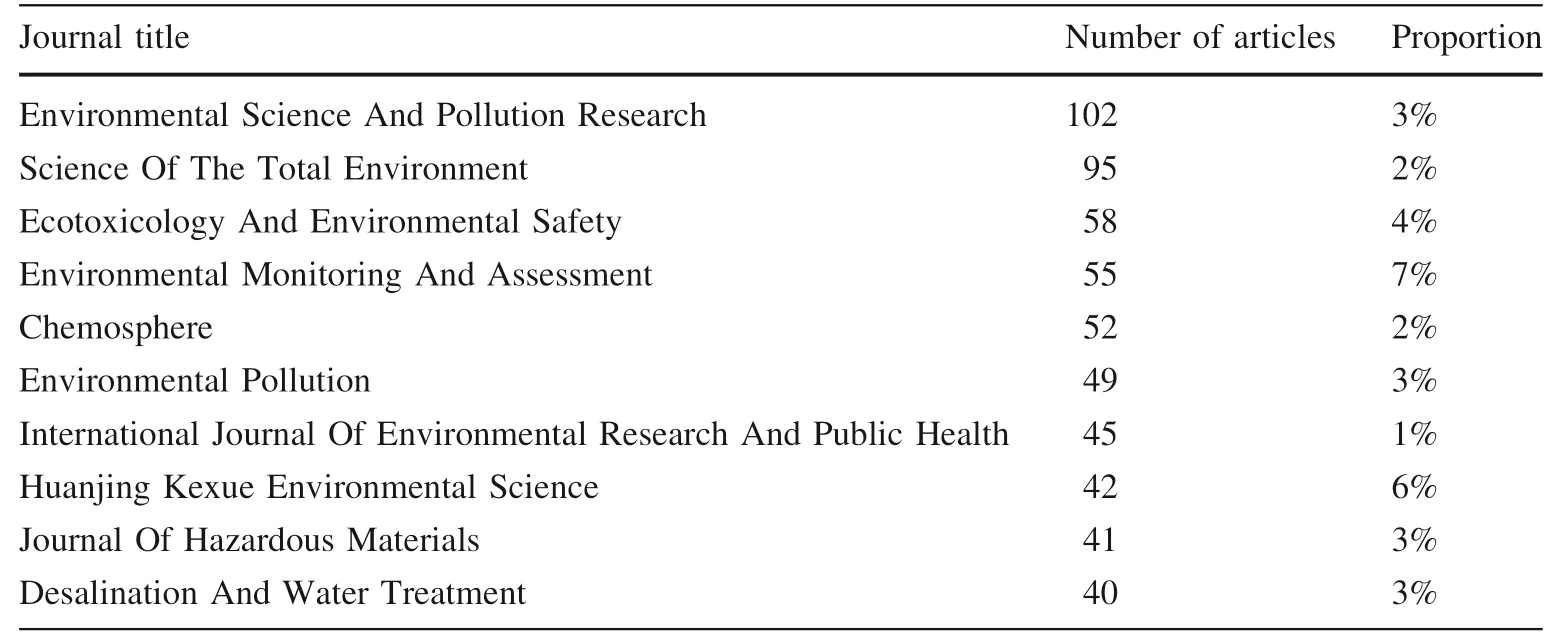
Table 2 Number of publications during 2019 using the term‘heavy metal’’in the title for the ten most common sources and proportion of articles(from Scopus using‘heavy metal*’’search,data accessed on 24 February 2021)

Fig.4 Evolution of publications(number of articles using the term divided by the total number of all articles published that year)using the term‘‘heavy metal’’in the topic for journals that highly used‘heavy metal’’term(data from Web of Science using‘heavy metal*’’search,plotted using a 3 year span moving average,accessed on 24 February 2021)
In 2019,34%of those articles were co-authored by researchers from Chinese institutions,6%from India and 5%from USA(Fig.5),ref lecting in part the emergence of intense research activity on widespread environmental issues in the region and as already outlined by Pourret and Hursthouse(2019),emerging reports in English language journals,perhaps has enhanced the growth of the term,a result of perpetuating the approach to an established and long-standing practice.
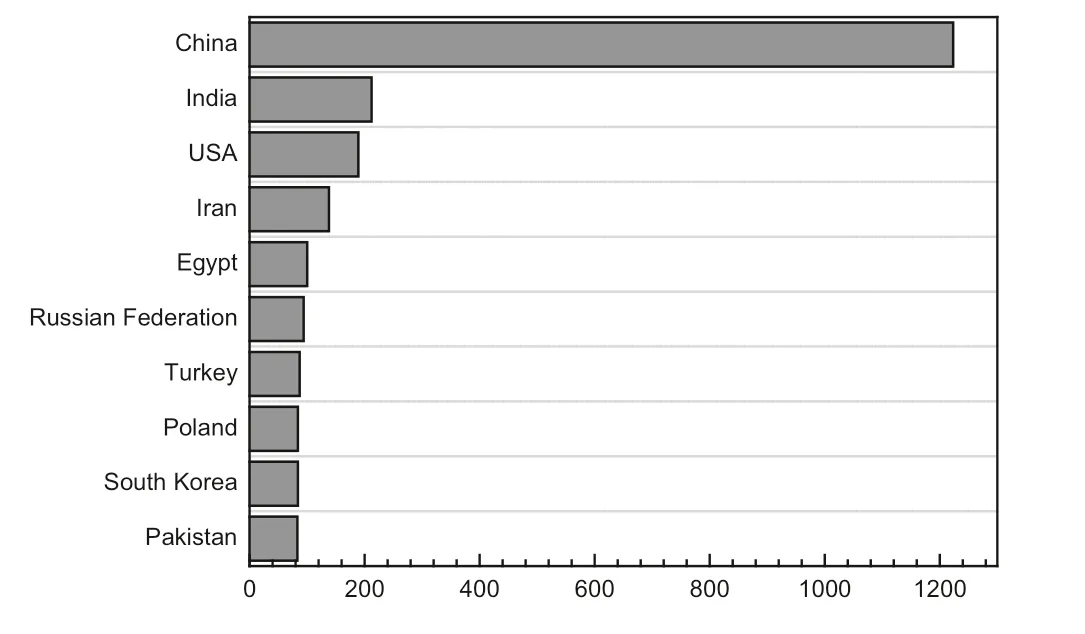
Fig.5 Article distribution by country(top 10)of articles published in 2019 having the term heavy metal*in the title(country based on authors aff iliation,several countries may count for the same article)(data accessed on 24 February 2021 from Scopus)
Thanks to social media,the debate is also relayed to a larger audience(e.g.sketchnote on twitter,Fig.6).

Fig.6 Sketchnote illustrating the misused term‘‘heavy metal’(artwork from Dr.Dasapta Erwin Irawan)(Irawan 2020)
3 Discussion
As already proposed by Hu¨bner et al.(2010),solutions exist to deal with the long-standing problem of the imprecise usage of the term‘‘heavy metals’’in the scientif ic literature.
Some authors propose:
(i) Formulating one single scientif ic def inition.This would be an ideal approach,but unlikely to be adopted.A general agreement about a single atomic mass,atomic number,density or another similar criterion will be diff icult to achieve.Indeed,Ali and Khan(2018)try to but half of the periodic table is considered by this def inition(Fig.1).
(ii) Calling the ten elements most commonly considered as‘‘heavy metals’’,Cr,Co,Ni,Cu,Zn,As,Cd,Sn,Hg,Pb as‘‘heavy metals’’,all other elements not.It is basic and to a certain degree arbitrary,but at least uniform and based on a mutual understanding(Hu¨bner et al.2010),though metalloids are still included.
We propose:
(i) Replacement of the term‘‘heavy metals’’with a reasonable and scientif ically defendable terms like‘‘potentially toxic element’’,‘‘trace metal element’’,‘‘metal’’,‘‘metalloid’’in environmental studies(Pourret and Hursthouse 2019).
(ii) Avoiding the problem by not using this umbrella term and referring simply to metals or elements.This is a reasonable approach and is probably the only approach that ultimately might successfully suppress the term‘‘heavy metals’’(Pourret and Bollinger 2018).
4 Conclusions
To be consistent,researchers should only use well-accepted def initions.In the case of‘‘heavy metal’’,this term should be replaced by‘‘metal’’,‘‘metalloid’’according to the case,or by‘‘trace metal’’or‘‘potentially toxic element’’when this can be considered.The best way to describe the studied elements is to clearly name them or consider them as a group of elements(metals or metalloids).
Declaration
Conf licts of Interest
The author declares no conf lict of interest.- Acta Geochimica的其它文章
- Validating the deep time carbonate carbon isotope records:effect of benthic f lux on seaf loor carbonate
- Petrology and geochemical framework of dolerites dykes of Temte´,North Cameroon,Central Africa
- Interaction of Ca2+and soil humic acid characterized by a joint experimental platform of potentiometric titration,UV-visible spectroscopy,and f luorescence spectroscopy
- Trace and rare earth element geochemistry of the black and grey shales of the Calabar Flank,Southeastern Nigeria:constraints on the depositional environment and the degree of metal enrichment
- Geochronological and geochemical comparison of Precambrian meta-maf ic volcanics in Zhongtiaoshan and Lu¨liangshan Regions in Shanxi,North China Craton
- Mineralogy and geochemistry of sands of the lower course of the Sanaga River,Cameroon:implications for weathering,provenance,and tectonic setting

